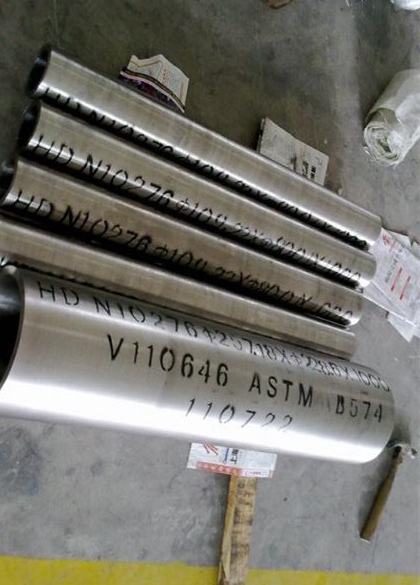Incoloy 825 and Hastelloy C276 are the most commonly used materials for metal alloys. They are known for their excellent corrosion resistance, durability and high temperature resistance. However, despite the similarities between these alloys, there are significant differences in their composition, properties and applications. This article will examine the differences between incoloy 825 and Hastelloy C276 to understand which alloy is suitable for your requirements.
What is Incoloy 825?
Incoloy 825 is a nickel-iron-chromium alloy with added copper, molybdenum and titanium. It has excellent corrosion resistance in acidic and alkaline environments, making it ideal for a variety of industries including petrochemical processing, nuclear reactors, offshore oil and gas production, and marine applications. In addition to its excellent corrosion resistance, Incoloy 825 has good heat resistance and excellent strength over a wide temperature range.
What is Hastelloy C276?
Hastelloy C276 is an alloy that resists corrosion in a variety of environments and is ideally suited for use in a variety of industrial applications. It also has excellent strength and toughness properties, making it suitable for high temperature applications.
Differences between Incoloy 825 and Hastelloy C276:
Incoloy 825 is a nickel-iron-chromium alloy containing molybdenum, copper and titanium. The alloy’s composition provides excellent corrosion resistance in harsh environments such as sulfuric and phosphoric acid. Hastelloy C276, on the other hand, is a nickel-molybdenum-chromium alloy that contains tungsten. This composition makes it ideal for highly corrosive environments containing chlorides and other halides. Additionally, Hastelloy C276 is more versatile in its resistance to a wide range of compounds, while incoloy 825 is typically used in a limited range of applications.
Mechanical behavior
The mechanical properties of the material are critical in determining the load carrying capacity, tensile strength and durability of the final product. Incoloy 825 has a lower yield strength but is more ductile than Hastelloy C276 and can withstand higher temperatures. The latter has higher tensile strength, is stiffer and more resistant to deformation, but is less ductile than incoloy 825. Ultimately, alloy selection should depend on the specific mechanical requirements of the application.
Corrosion resistance:
Both Incoloy 825 and Hastelloy C276 are known for their excellent corrosion resistance. Incoloy 825 is best suited for use in environments containing sulfuric and phosphoric acids. In contrast, Hastelloy C276 is more suitable for salt water, marine and chemical environments containing chlorides and other halides. In general, Hastelloy C276 has excellent resistance to pitting, crevice corrosion and stress corrosion cracking, making it a first choice for critical applications.
Application areas:
With their excellent corrosion resistance and mechanical properties, incoloy 825 and Hastelloy C276 are used in a wide range of industries, including chemical processing, oil and gas, desalination and offshore drilling. Incoloy 825 is commonly used in heat exchangers, storage tanks and pipeline valves. Hastelloy C276, on the other hand, is better suited for high temperature and highly corrosive applications such as reaction vessels, chemical processing equipment, and flue gas desulfurization systems.
cost:
Cost is always a factor to consider when choosing between two materials. Hastelloy C276 is generally more expensive than Incoloy 825, in some cases up to double the price. However, the higher cost is often justified due to the alloy’s superior corrosion resistance and mechanical properties, making it more suitable for critical applications. In contrast, incoloy 825 may be more cost-effective if the application is less demanding.
in conclusion:
Incoloy 825 and Hastelloy C276 are the most versatile and widely used alloys across industries. When choosing between them, specific application requirements such as chemical exposure, temperature, and mechanical stress must be considered. In general, Hastelloy C276 is a better choice for demanding applications requiring superior corrosion resistance and mechanical properties, while incoloy 825 is best suited for handling milder environments. Ultimately, the choice between the two alloys depends on a cost-benefit analysis for the specific application.
Tianjin Anton Metal Manufacture Co., Ltd. is a company specializing in the production of various nickel-based alloys, Hastelloy alloys and high-temperature alloy materials. The company was established in 1989 with a registered capital of 10.0 million, specializing in the production and sales of alloy materials. Anton Metal’s products are widely used in aerospace, chemical industry, electric power, automobile, nuclear energy and other fields, and can also provide customized alloy material solutions according to customer needs. If you need to know the price consultation of alloy materials or provide customized alloy material solutions, please feel free to contact the sales staff.
==========================================
www.antonmetal.com
ANTON METAL| Your specialty alloys manufacturer
Email: dominic@antonmetal.com
Phone: +8613132148618(wechat/whatsapp)
Post time: Dec-29-2023











